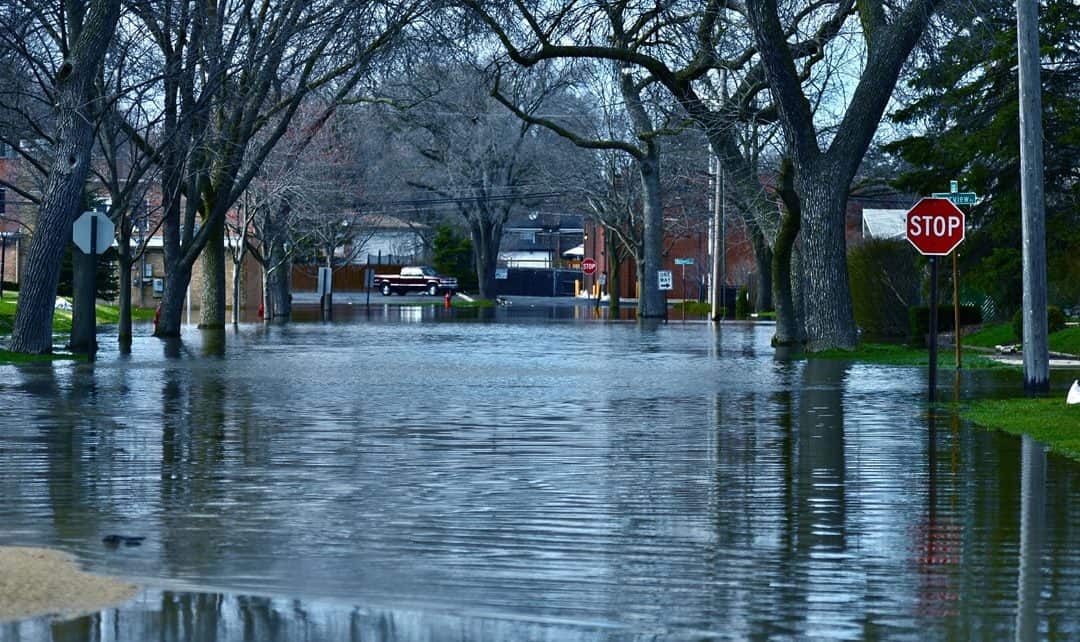A new study says flooding pushes down housing prices and reduces the number of homes for sale, while increasing the time it takes a home to sell.
The report, Treading Water: Impact of Catastrophic Flooding on Canada’s Housing Market, says that over the past eight years, flooding in five Canadian cities resulted in an average 8.2-per-cent reduction in the final sale price of houses, 44.3 per cent reduction in the number of houses listed for sale and 19.8 per cent more days on market to sell a house.
The study, from the Intact Centre on Climate Adaptation, University of Waterloo, researched what happened to housing markets following floods in Grand Forks, B.C., Burlington, Ont., Toronto, Ottawa and Gatineau, Que. between 2009 and 2020.
The impact of flooding was measured for periods of six months before and after flood events. Attribution of flood impacts was determined by comparing changes in nearby non-flooded control communities over identical time frames.
“The most costly impact of climate change affecting Canadians is residential basement flooding that is often made worse through poor land-use planning and management,” says the report.
“With about nine per cent (3.3 million) and 11 per cent (3.9 million) of the Canadian population residing in one-in-100 and one-in-200-year floodplains, respectively, these percentages are expected to increase as floodplains expand in response to more extreme precipitation driven by climate change . . . and to the loss of natural infrastructure (forests, grasslands and wetlands that act as ‘sponges’). Also, outside the boundary of floodplains, residential flooding is impacting an increasing number of homes and communities due to high-intensity precipitation events – referred to colloquially as ‘water bombs’ – that render historically safe communities vulnerable to flooding.”

Chris Chopik
Chris Chopik, a Realtor with Sotheby’s International Realty Canada in Toronto who contributed to the study, says directly affected areas from flooding were studied as well as adjacent areas.
“These markets, they recover. They’re not stuck there. We’re measuring what happened and on average across five Canadian flood-affected cities, from catastrophic loss the average is an 8.2 per cent drop (in prices),” says Chopik.
“The key message is that this is actually happening. It’s not hyperbole. It’s not like, ‘oh, Chris is making some wild claims that flood is affecting real estate values’. This is an academic university that did the math and what they discovered is that it takes longer to sell, there are fewer properties available and the price comes down after a flood event, after a catastrophic loss event.
“And in some markets, where this is going to be a persistent, on-going problem, that marketplace will have to reconcile its choice of path.”
That could include upgrading building codes and building practices to make houses in those neighbourhoods more flood resilient and more capable of handling a flood, with the ability to recover more quickly.
“I’ve been advocating for years that the government create a flood map that allows real estate practitioners to teach our clients about the risk and to learn ourselves. You should be able to put an address into a field on the internet and get a result which says this site is at risk of a one-in-100-year flood or at risk of one-in-10-year flood (or that it) has been flooded, is going to flood,” says Chopik.
The study also examined the impact of community level flooding on mortgage arrears and deferrals in two Canadian cities for six months pre- and post-flooding. Results showed no change in homeowners’ ability to pay their mortgage, but a reduction in the appraised value of a house due to flooding would influence limits on lending by mortgage providers.
Actions recommended in the report to give Canadians guidance to limit flood risk include:
Home flood protection guidance:
Municipalities, banks, insurers and real estate associations should distribute guidance to homeowners on means to lower the risk of basement flooding
Climate Adaptation Home Rating Program (CAHRP):
The federal government should link the CAHRP to EnerGuide home energy audits
Flood risk maps:
The federal government should update flood risk maps and ensure they are publicly accessible
Residential flood risk scores:
The federal government should develop a home flood-risk scoring system based on postal code (as already exists in the U.S.)
Natural infrastructure:
All governments should commit to retaining and restoring natural infrastructure (forests, grasslands, wetlands) to limit current and future flood risk
Community flood risk mitigation:
Communities should act now to identify and protect areas at high risk of flooding.
“Canada must learn to manage flood risk, rather than chase it. Recognizing that residential flooding is the most costly and pervasive impact of extreme weather, municipal planners should double-down on ensuring that adaptation factors into community design,” says study co-author Blair Feltmate.

Mario Toneguzzi is a contributing writer for REM. He has more than 40 years of experience as a daily newspaper writer, columnist, and editor. He worked for 35 years at the Calgary Herald, covering sports, crime, politics, health, faith, city and breaking news, and business. He now works on his own as a freelance writer for several national publications and consultant in communications and media relations/training. Mario was named in 2021 as one of the Top 10 Business Journalists in the World by PR News – the only Canadian to make the list.













